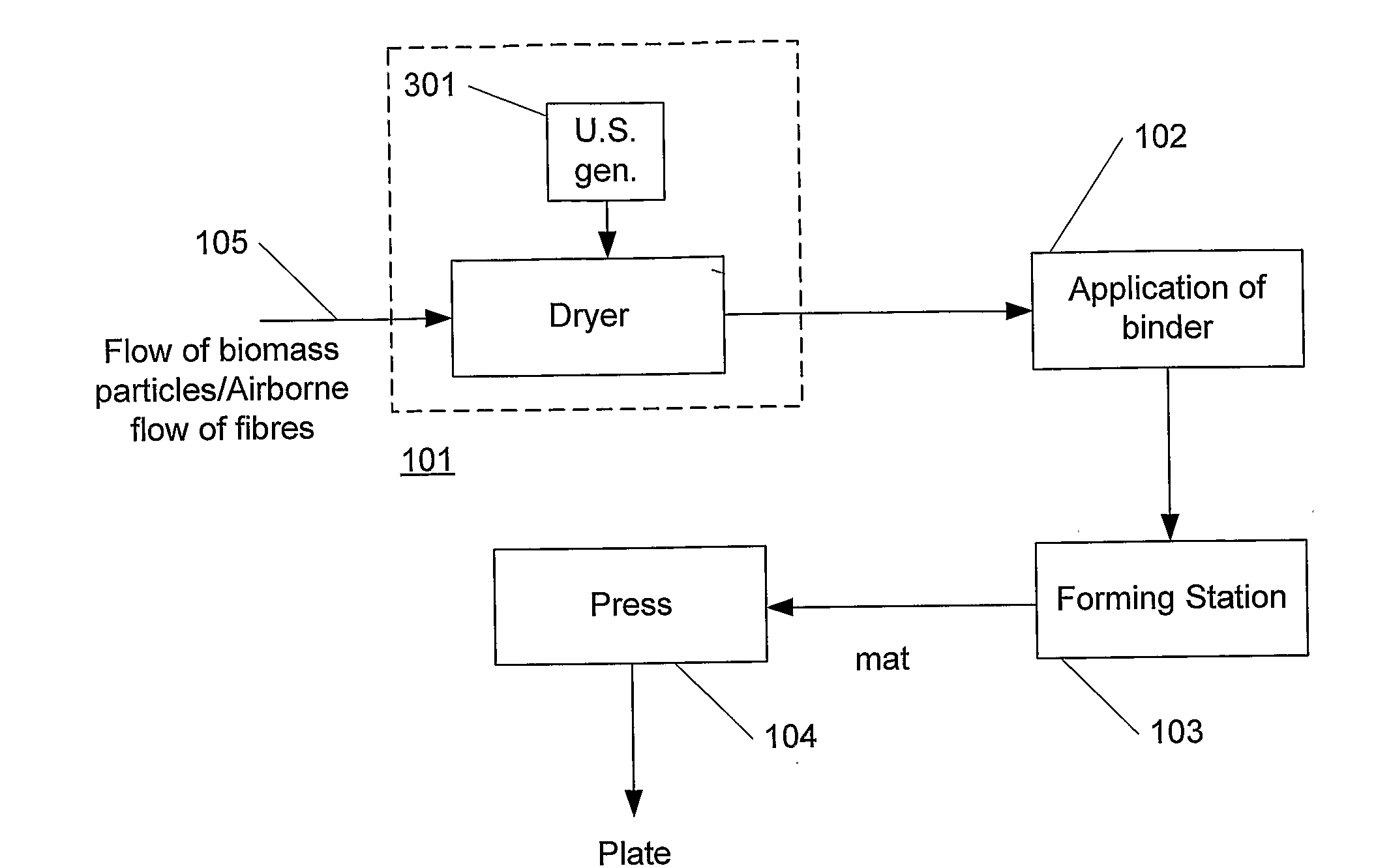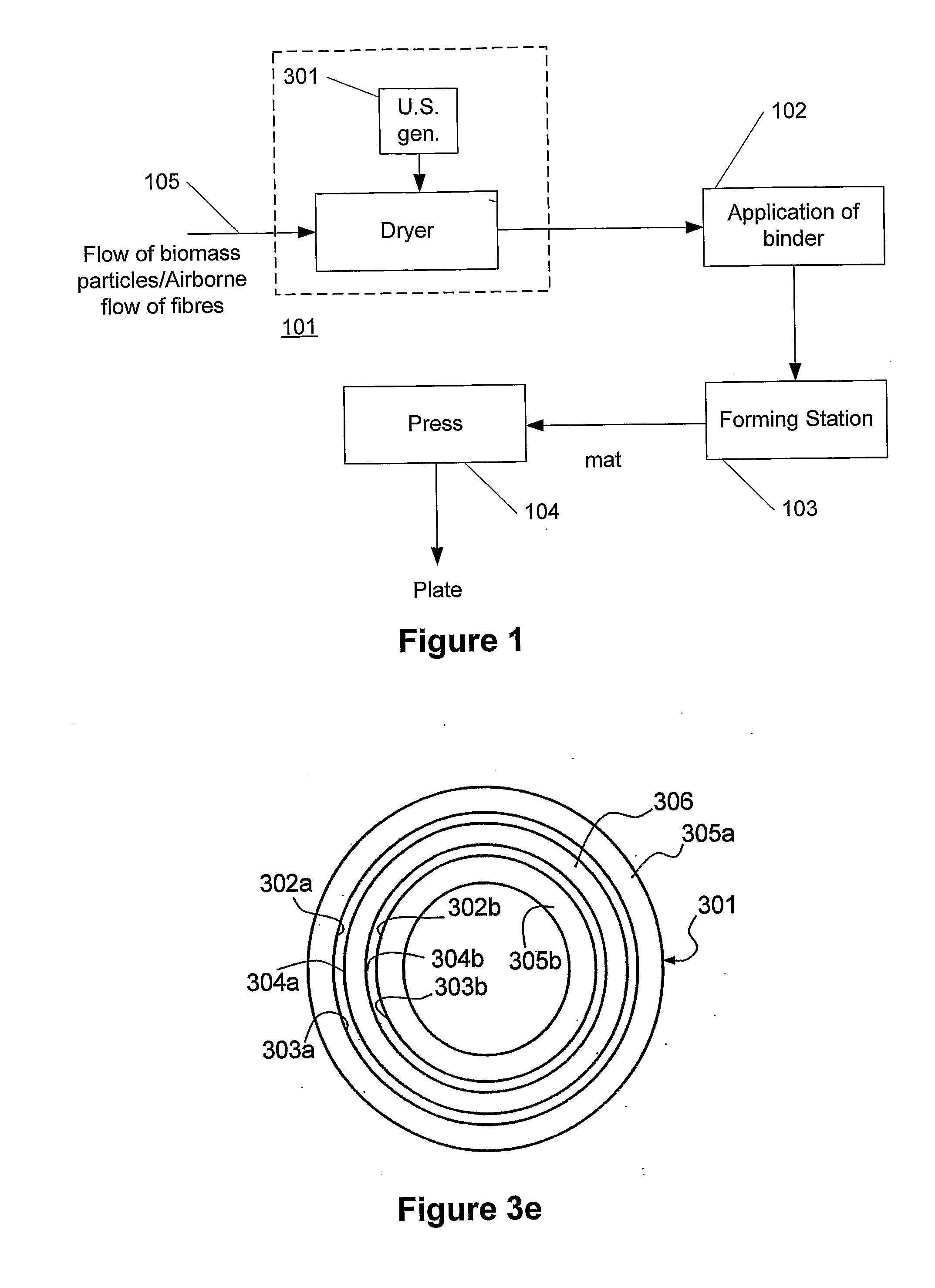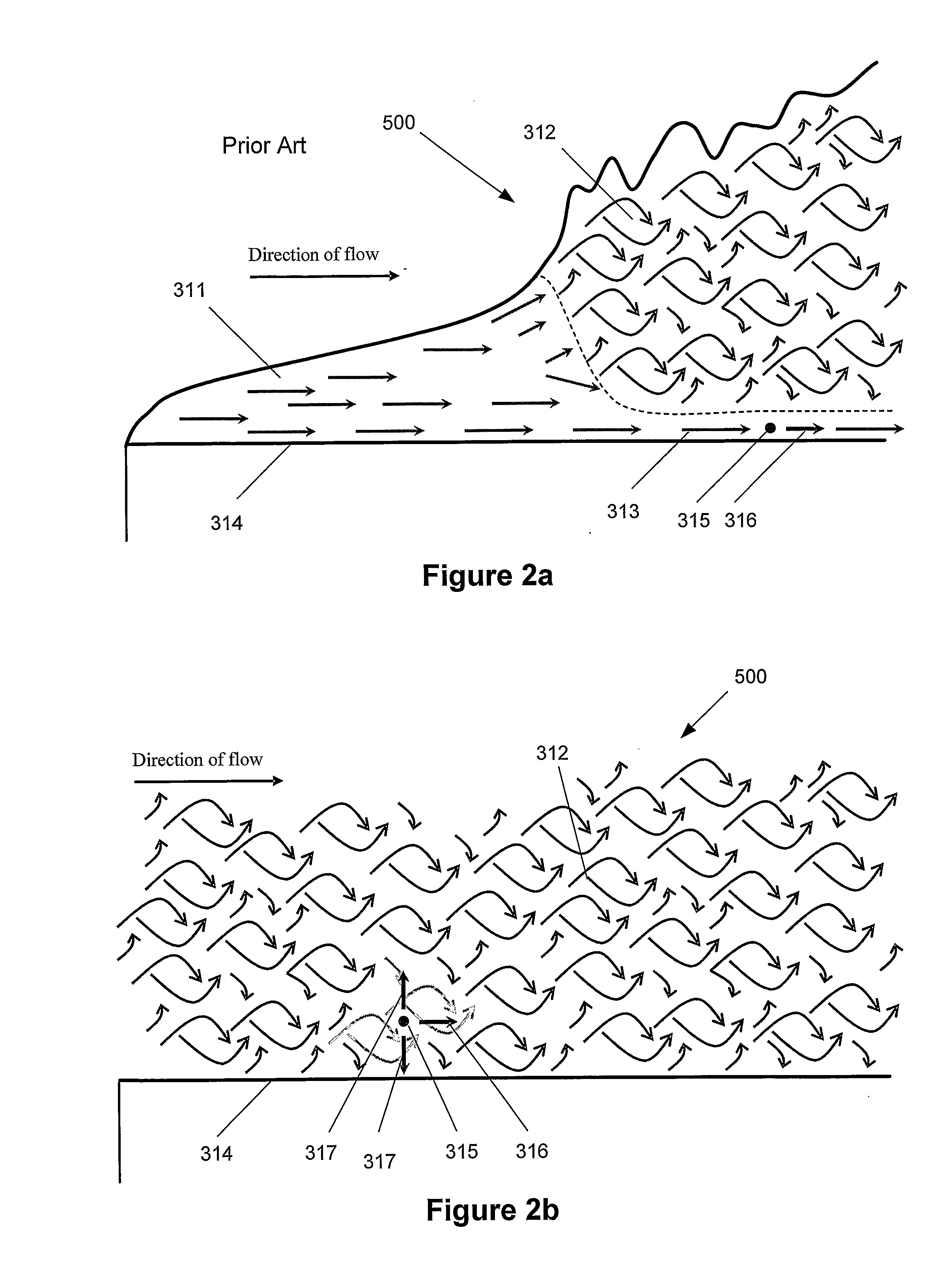Method And Device For Drying A Flow Of Biomass Particles
a biomass particle and flow technology, applied in the direction of electrically static cleaning, cleaning processes and apparatus, lighting and heating apparatus, etc., can solve the problems of limiting the efficiency of the drying process, less available to both the drying gaseous medium and the approach is very costly, and achieves the reduction of drying time and power consumption of the dryer, and the effect of enhancing heat and moisture exchang
- Summary
- Abstract
- Description
- Claims
- Application Information
AI Technical Summary
Benefits of technology
Problems solved by technology
Method used
Image
Examples
Embodiment Construction
[0068]FIG. 1 schematically illustrates a block diagram of one embodiment of a system / method of the present invention. Illustrated is a dry fibreboard production line, i.e. a process of manufacturing plates such as MDF (Medium Density Fibreboards) or the like, where a synthetic binder is applied to biomass particles such as wood fibres or the like.
[0069]The process preferably involves an airborne flow of fibres (105) that is fed into a dryer (101) according to the present invention that dries the fibres to a moisture content of 1-20% or preferably 1-10% of dry matter, as explained in greater detail in the following.
[0070]According to the present invention, the dryer (101) comprises one or more ultrasound generators (301). In this way, a more efficient drying of the fibres is obtained, which result in a significant acceleration of the drying process. The reason is that the ultrasound minimizes or eliminates the laminar sub-layer, as described below, where the absence of the sub-layer ...
PUM
 Login to View More
Login to View More Abstract
Description
Claims
Application Information
 Login to View More
Login to View More - R&D
- Intellectual Property
- Life Sciences
- Materials
- Tech Scout
- Unparalleled Data Quality
- Higher Quality Content
- 60% Fewer Hallucinations
Browse by: Latest US Patents, China's latest patents, Technical Efficacy Thesaurus, Application Domain, Technology Topic, Popular Technical Reports.
© 2025 PatSnap. All rights reserved.Legal|Privacy policy|Modern Slavery Act Transparency Statement|Sitemap|About US| Contact US: help@patsnap.com



